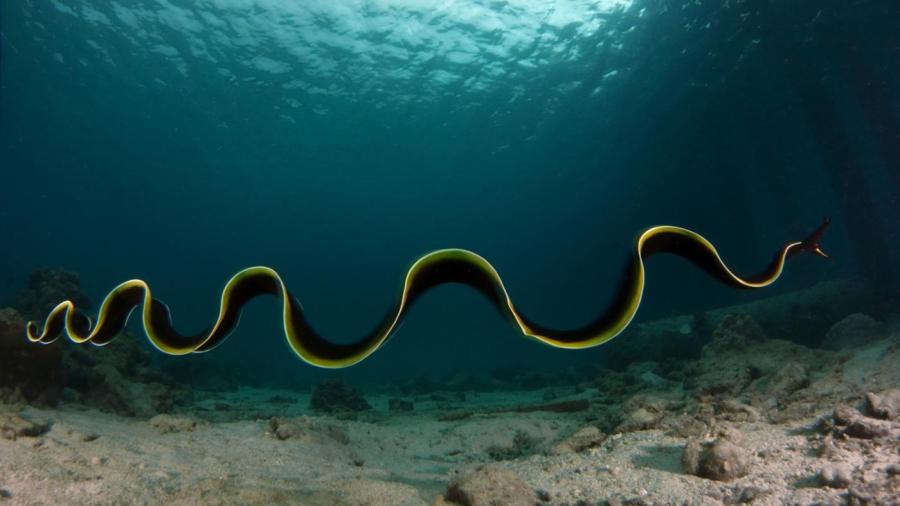What Are the Types of Eels?

There are several species of eels, which fall into the families of either freshwater or saltwater eels. The two eel families are the family Anguillidae and the family Moninguidae. Eels in the first family share a common genus and reside primarily in North America; those in the latter class generally live in tropical locales and have different body shapes.
Eels in the family Anguillidae spend their lives in freshwater habitats. They may, however, return to the ocean as adults for brief periods to mate and breed young. This family includes 19 species and 6 subspecies; some breeds are more widespread than others, but all share common characteristics in body type and habitat. They generally have long, snake-like bodies. Most do not have separate dorsal and pelvic fins; instead, their fins merge together to form a continual fin fringe or ridge. These eels typically have small gills and often just a single gill slit at the throat. Eels of this family range in size, but generally reach body lengths of 12-36 inches.
This family includes snowflake eels, which are found in the Atlantic Ocean. Snowflake eels can travel great distances; they may migrate overseas to the western shores of Europe upon reaching young adulthood.
In addition to living in freshwater, eels can be found in saltwater environments, such as oceans and marshes, around the world too. Saltwater eels are typically longer and larger than their freshwater counterparts. Saltwater eels have different body types than freshwater eels; their physical compositions include long, slender, cylindrical body designs and a set of gills with multiple slits. Saltwater eels live primarily in tropical regions, although some migrate to northern locales if waters are unusually warm, or when transported by storms. Saltwater eels vary widely in size; the smallest adults rarely exceed 6 inches in body length, while the largest species can grow to be 55 inches. Although freshwater eels tend to stay away from saltwater bodies, saltwater eels may spend a portion of their time in freshwater environments, such as when breeding and mating.
This class of eels contains some of the most poisonous eels in the world, and the most popular. Moray eels, worm eels and spaghetti eels are among the most common varieties of eels in this class. One of the most feared and awe-inspiring eels – the electric eel—creates electrical voltage to stun and kill its prey. Many fish have the ability to produce electrical currents, including jellyfish, but electric eels are the only species that produce voltages strong enough to paralyze prey. These eels possess similar characteristics as a number of fish species, such as the need to breathe air. Some eels and fish share remarkably similar characteristics, such as biological and chemical features, that make them closely related, and distinguished only at the cellular level.





